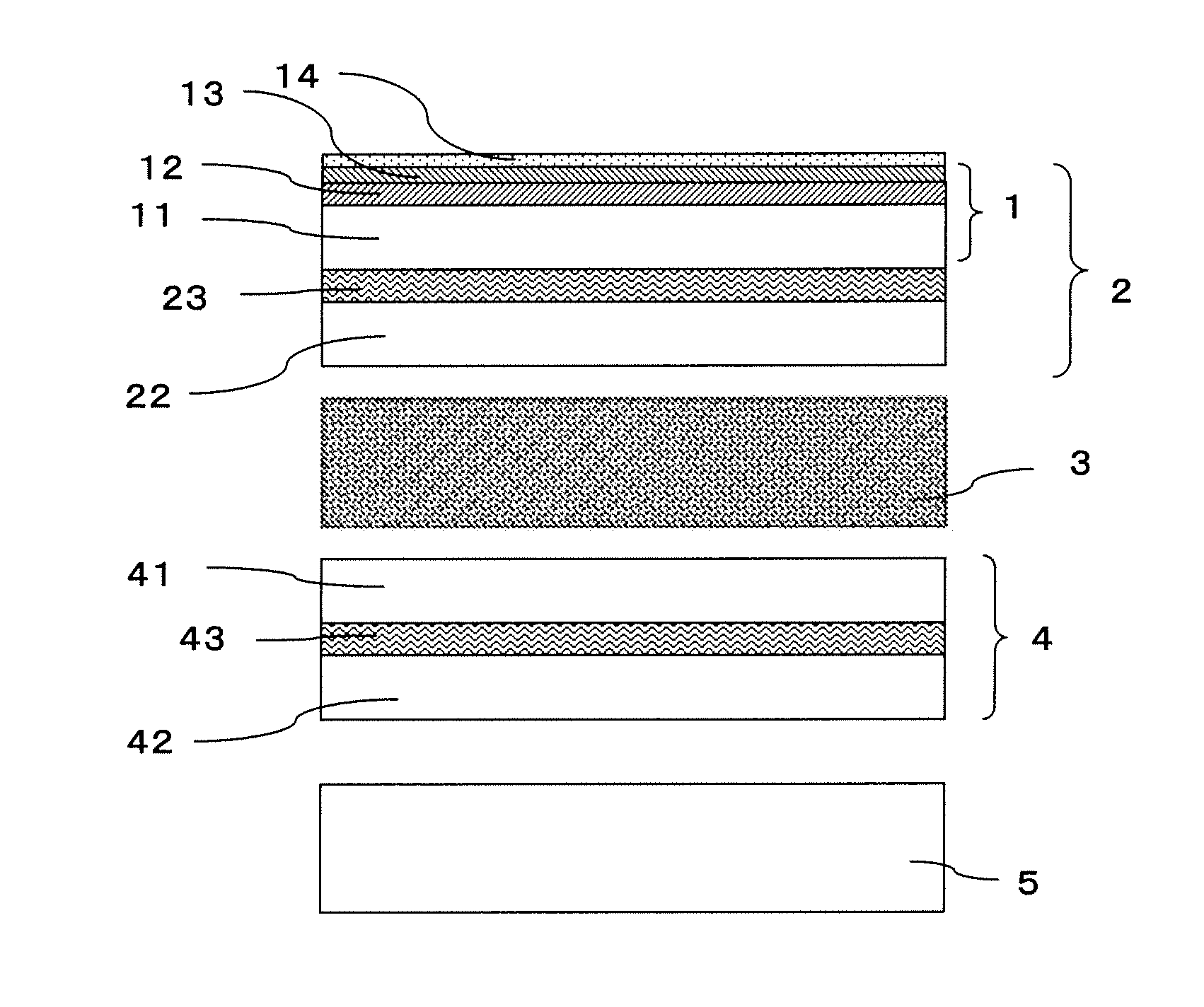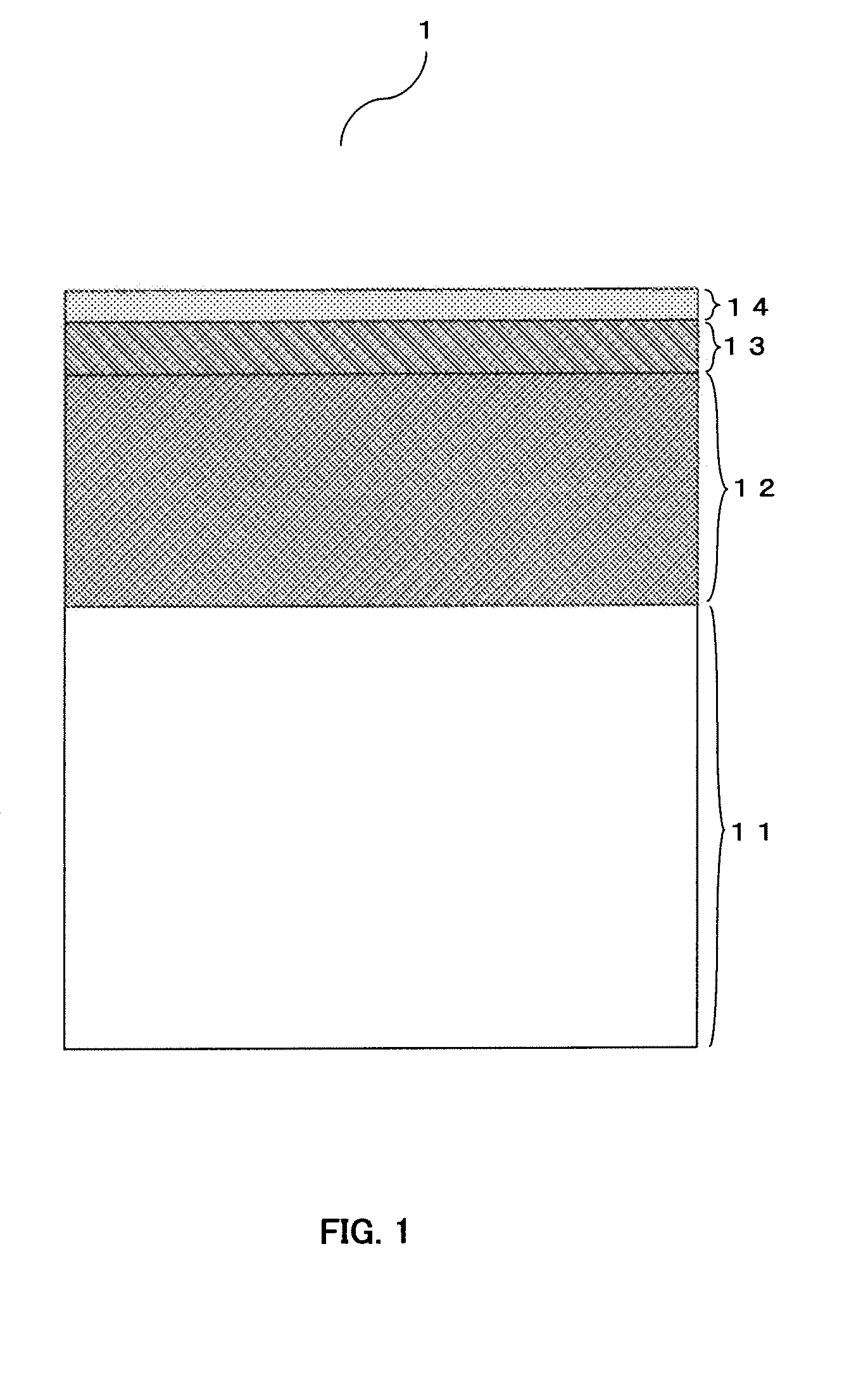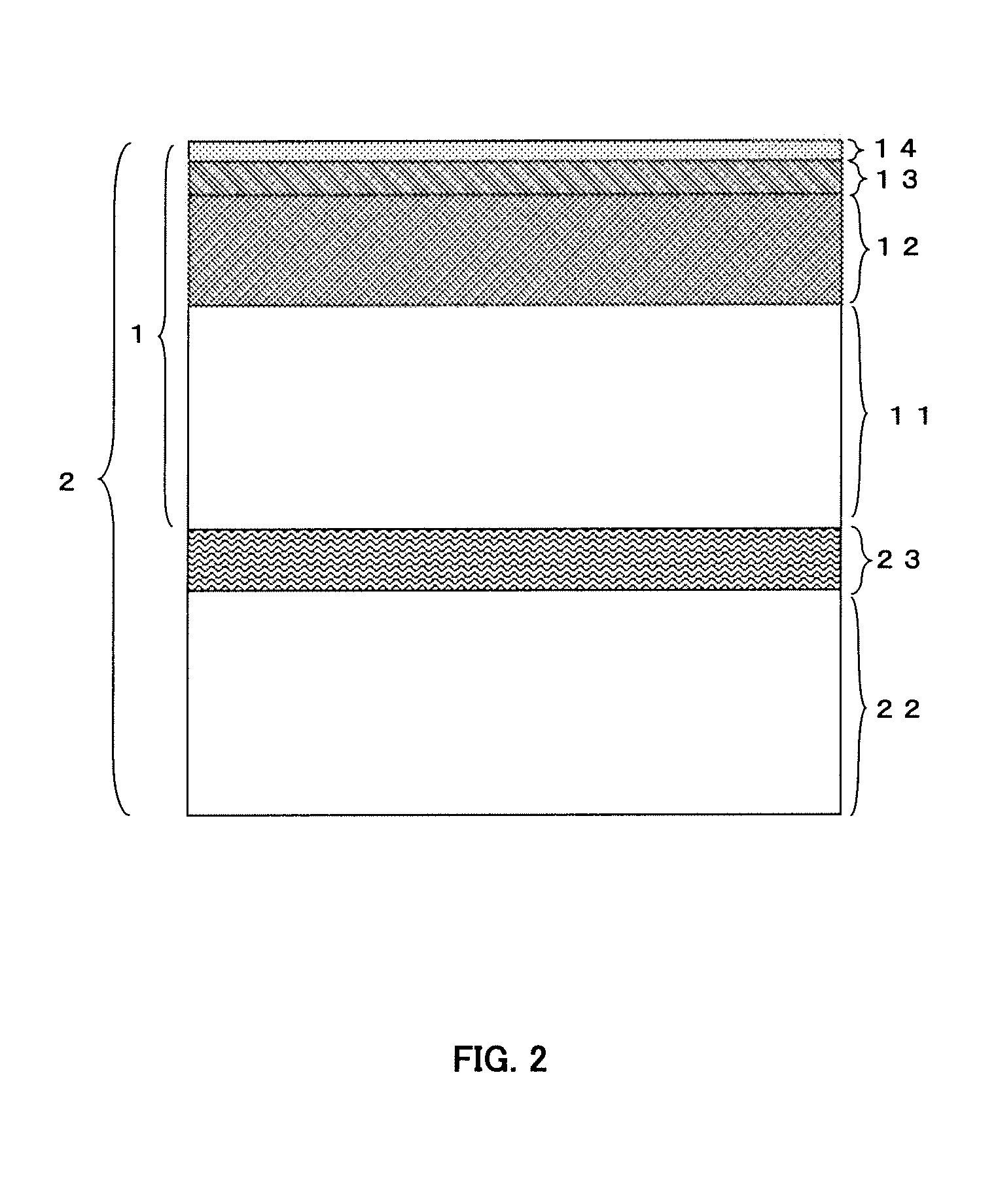Anti-Reflection Film
- Summary
- Abstract
- Description
- Claims
- Application Information
AI Technical Summary
Benefits of technology
Problems solved by technology
Method used
Image
Examples
example
Example 1
Transparent Substrate
[0143]80 μm thick triacetyl cellulose films were prepared as the transparent substrates.
[0144]An (original) polarizing plate was prepared by arranging a polarizing layer of iodine added elongated polyvinyl alcohol between a pair of 80 μm thick triacetyl cellulose films (a first and a second transparent substrates).
[0145]10 parts by weight of dipentaerythritol triacrylate, 10 parts by weight of pentaerythritol tetraacrylate and 30 parts by weight of urethane acrylate (UA 306T by Kyoeisha chemical Co., Ltd.) as the ionizing radiation curable material, 2.5 parts by weight of Irgacure 184 (by Ciba Japan) as the photopolymerization initiator, and 25 parts by weight of methyl ethyl ketone and 25 parts by weight of butyl acetate were blended together to prepare a coating liquid for forming a hard coat layer. The coating liquid for forming a hard coat layer was coated on a surface of the polarizing plate (on first polarizing plate) and on a transparent substrat...
example 2
Transparent Substrate
[0149]Similar to the case of >, 80 μm thick triacetyl cellulose films were prepared as the transparent substrates.
[0150]Similar to the case of >, an (original) polarizing plate was prepared by arranging an iodine-added elongated polyvinyl alcohol as a polarizing layer between a pair of 80 μm thick triacetyl cellulose films (as a first and a second transparent substrates).
[0151]Similar to the case of >, hard coat layers were formed on a surface of the polarizing plate (on the first polarizing plate) and on a transparent substrate of triacetyl cellulose film. The resultant hard coat layers had a thickness of 5 μm and refractive index of 1.52.
[0152]Similar to the case of >, antistatic layers were formed onto the hard coat layers formed on a surface of the polarizing plate (on the first polarizing plate) and on a transparent substrate of triacetyl cellulose film, respectively. The antistatic layers had a thickness of 163 nm, refractive index of 1.53 and thus an opti...
example 3
Transparent Substrate
[0155]Similar to the case of >, 80 μm thick triacetyl cellulose films were prepared as the transparent substrates.
[0156]Similar to the case of >, an (original) polarizing plate was prepared by arranging an iodine-added elongated polyvinyl alcohol as a polarizing layer between a pair of 80 μm thick triacetyl cellulose films (as a first and a second transparent substrates).
[0157]Similar to the case of >, hard coat layers were formed on a surface of the polarizing plate (on the first polarizing plate) and on a transparent substrate of triacetyl cellulose film. The resultant hard coat layers had a thickness of 5 μm and refractive index of 1.52.
[0158]Tetraethoxysilane as an organosilicon compound raw material was added with isopropyl alcohol and 0.1 N hydrochloric acid and hydrolyzed to obtain a solution containing tetraethoxysilane polymer. This solution was mixed with a dispersion solution of aluminum doped zinc oxide (AZO) particles (solid content ratio: 30% by we...
PUM
| Property | Measurement | Unit |
|---|---|---|
| Fraction | aaaaa | aaaaa |
| Fraction | aaaaa | aaaaa |
| Fraction | aaaaa | aaaaa |
Abstract
Description
Claims
Application Information
 Login to View More
Login to View More - R&D
- Intellectual Property
- Life Sciences
- Materials
- Tech Scout
- Unparalleled Data Quality
- Higher Quality Content
- 60% Fewer Hallucinations
Browse by: Latest US Patents, China's latest patents, Technical Efficacy Thesaurus, Application Domain, Technology Topic, Popular Technical Reports.
© 2025 PatSnap. All rights reserved.Legal|Privacy policy|Modern Slavery Act Transparency Statement|Sitemap|About US| Contact US: help@patsnap.com



